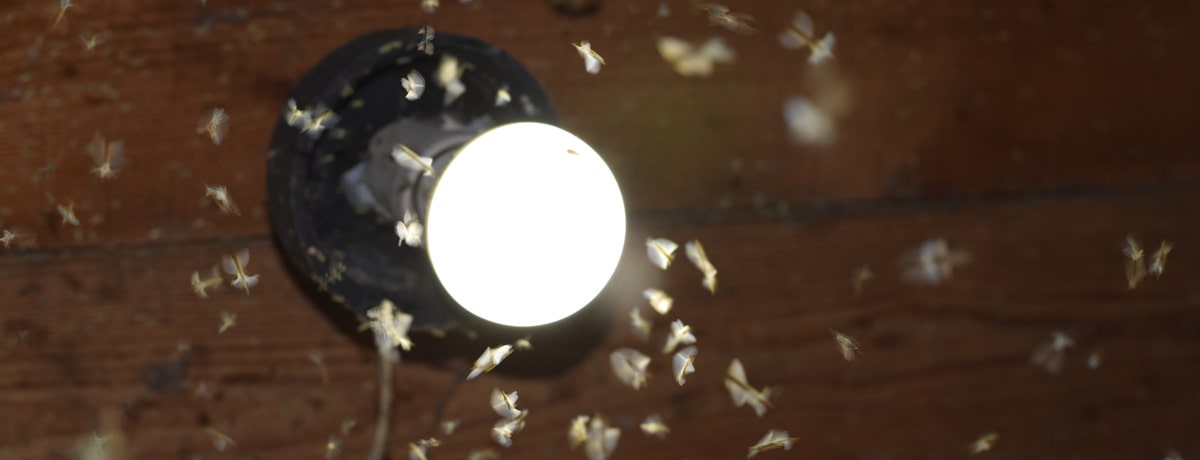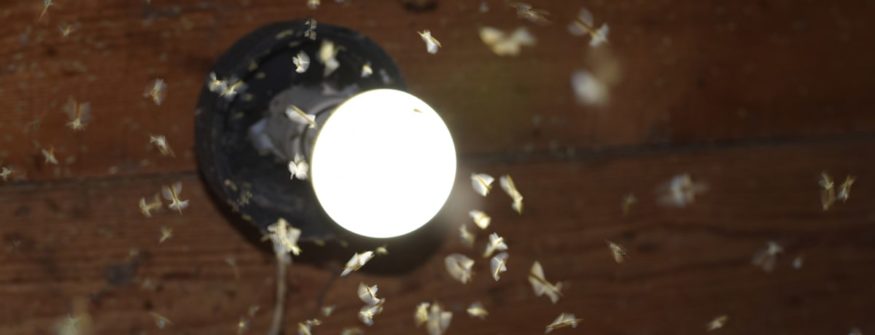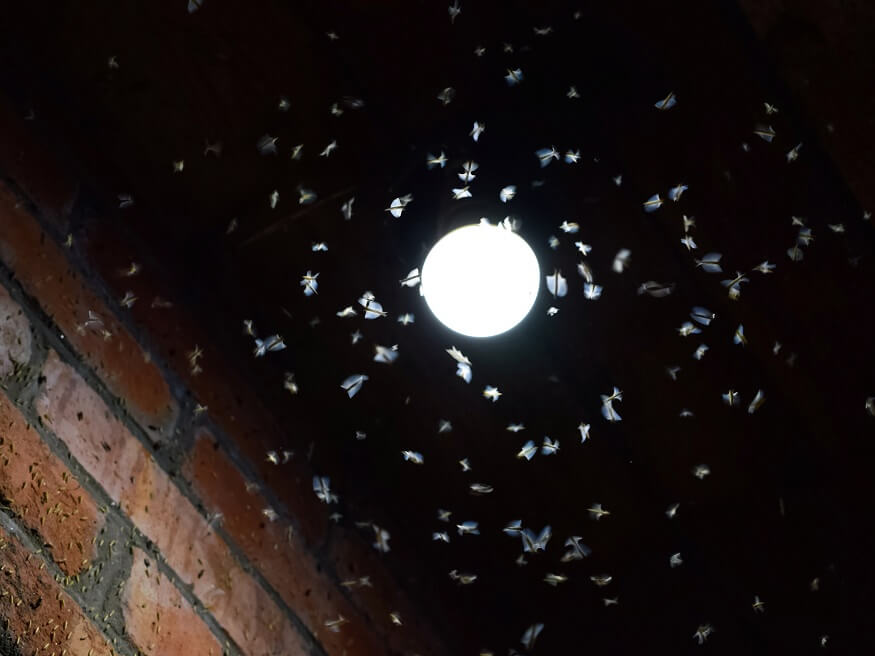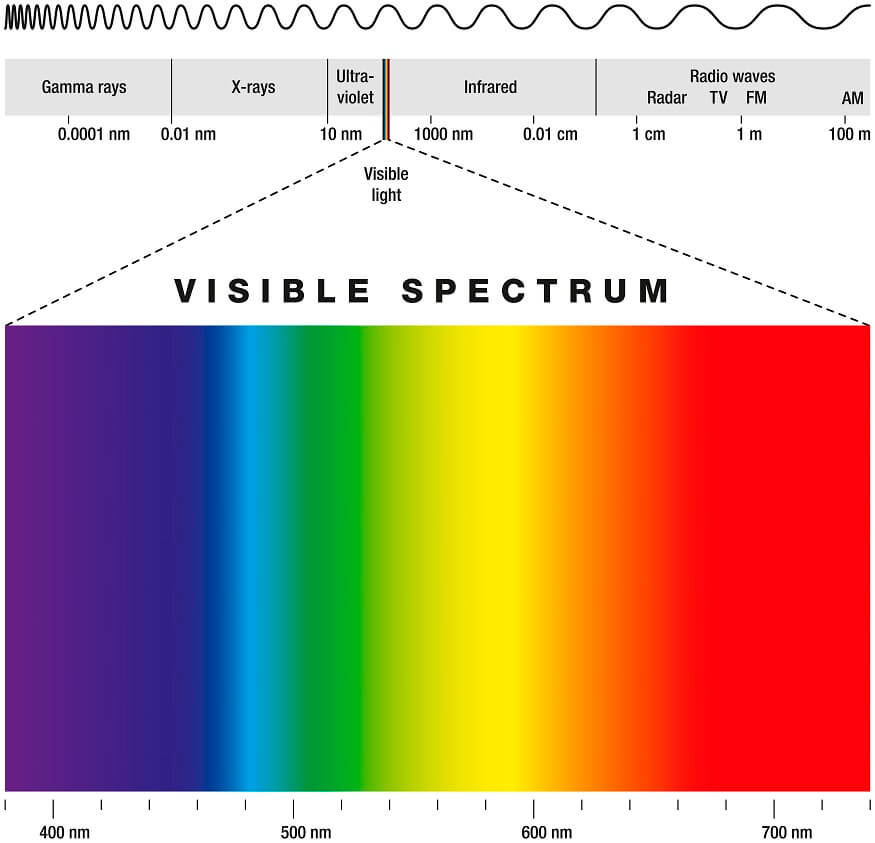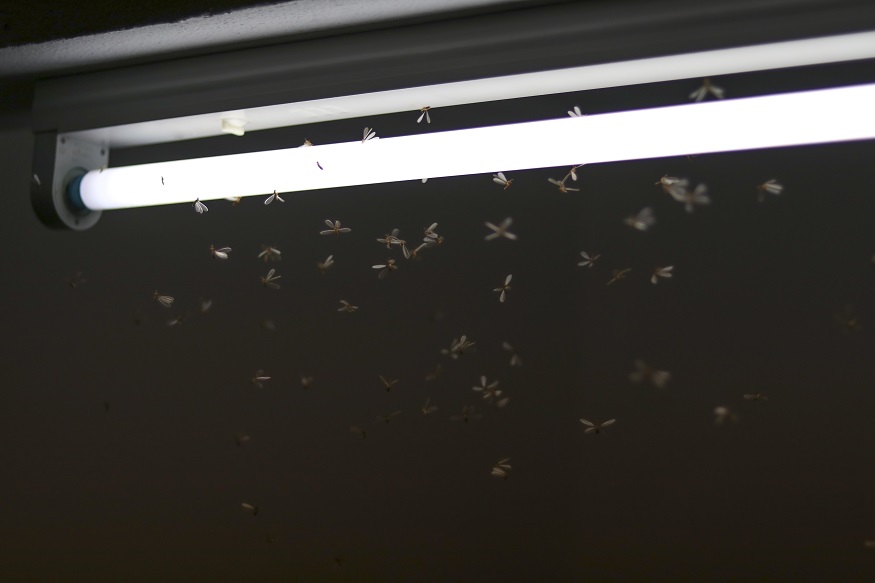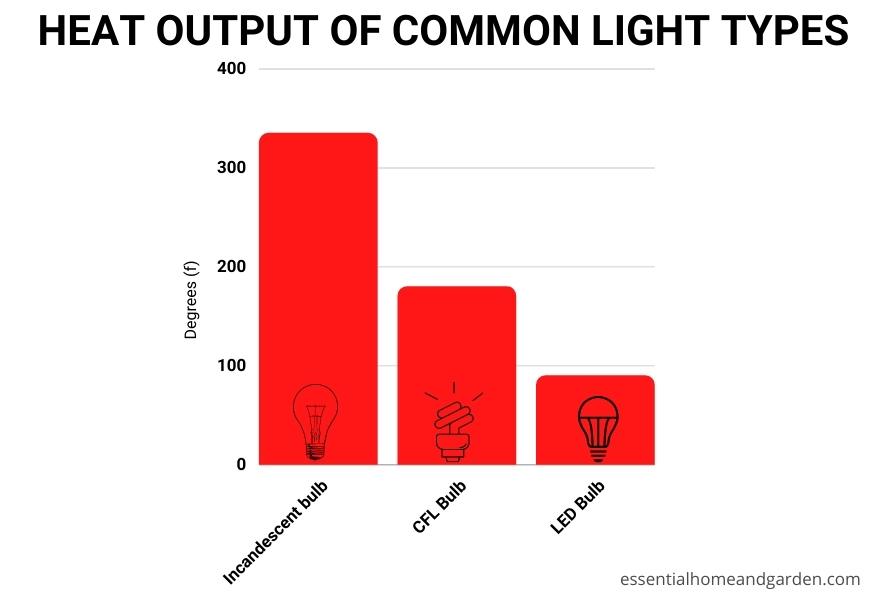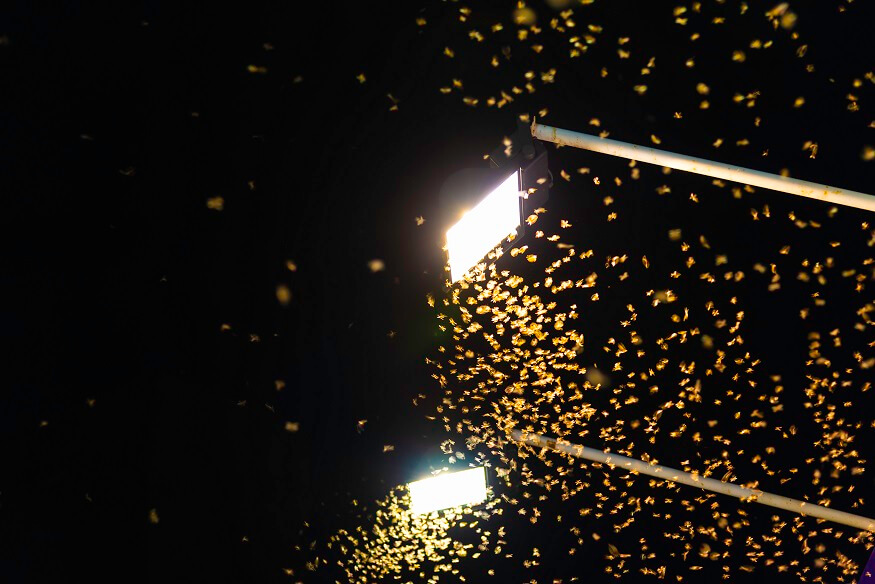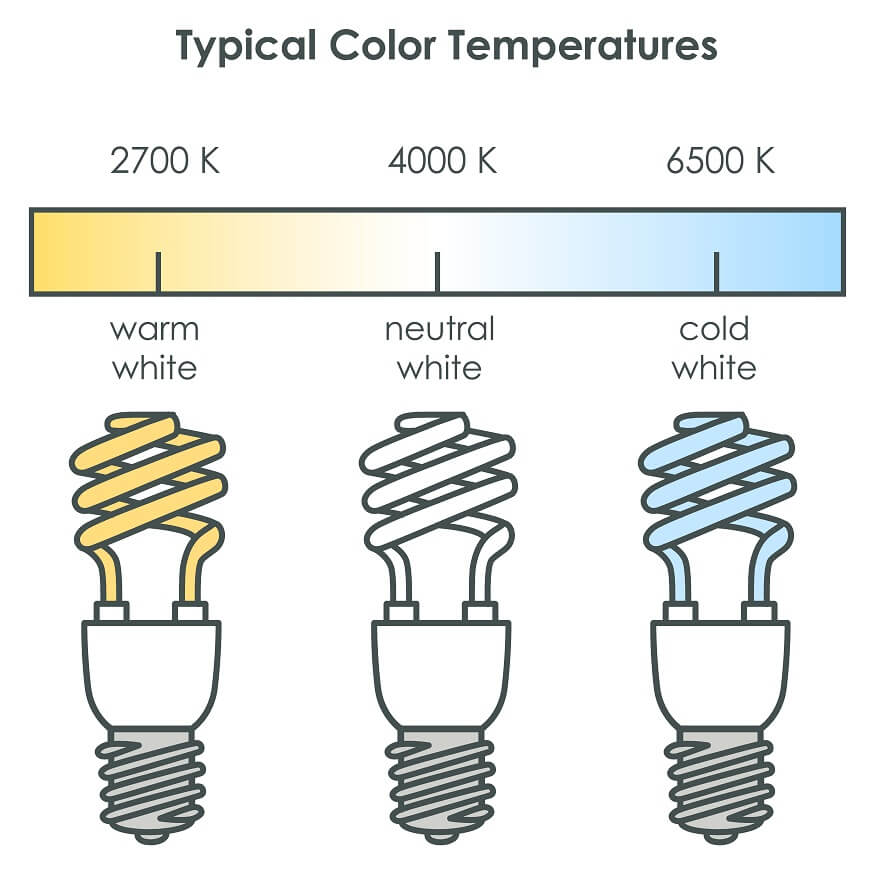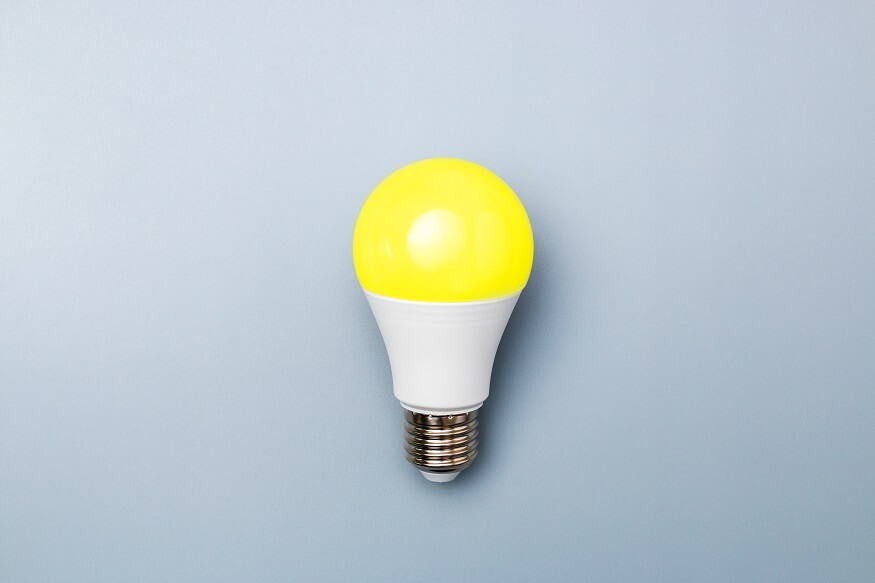It may feel like bugs are swarming around your porch light just to bug you, but the truth is that your porch light is the equivalent of a neon welcome sign. If you want to make it clear to local insects that they aren’t invited, you need to understand why your lighting attracts them.
Ensuring your outdoor lighting is unappealing to insects doesn’t require an expensive solution like replacing your light fixture. Based on the type of insects most common in your area, using the right lightbulb will dramatically reduce the insect population on your porch.
The Types of Lights That Attract Bugs
The way light affects insect behavior is a phenomenon called phototaxis. Some insects have positive phototaxis, so light attracts them (like moths). Other insects have negative phototaxis, so light repels them (like cockroaches and earthworms).
Phototaxis may sound complicated, but you don’t need a degree in insect biology to solve the problem. Reducing the phototaxis from your outdoor lighting is simple.
Three factors determine how attractive light is to flying insects: the light’s wavelength (color), its heat output, and its brightness. Understanding why particular light bulbs attract specific bugs will help you choose the best outdoor light for your home.
Wavelength
Have you ever wondered why “bug zappers” always use blue or purple light? This is because the colors are more visible to insects.
The human eye has only three types of receptors (red, green, and blue). This allows us to see the colors of the rainbow, but we can’t see other kinds of light (such as ultraviolet or “UV” light).
Like all other animals, insects see some colors well and can’t see different colors at all. They can easily see cool, short-wavelength colors (like blue and violet) and are most attracted to UV light.
More extended wavelength colors (yellow and orange) are less visible to insects. Most of them can’t see the red light at all. Yellow-tinted bug lights are becoming increasingly popular for this reason.
Heat
Aside from color, insects love to stay warm too. Since many lightbulbs emit heat, you could be drawing in more insects than you’d want. One good example is the pesky and blood-sucking mosquitoes. They hover around a light not because they are attracted to its color but rather due to heat.
Also read: The best mosquito killer.
That means you will want to consider heat output when choosing a light bulb.
Incandescent and halogen bulbs are filament-based, known to emit more heat, especially when the wattage is high.
LED and fluorescent, on the other hand, use flowing gas to emit light. Contrary to popular belief, LED lights emit heat, but they do give off much less heat than other light bulbs with the same wattage.
For example, tests of 100-Watt bulbs found that incandescent bulbs burned at 335 degrees Fahrenheit. 100-Watt compact fluorescent (CFL) bulbs burned at around 180 degrees. 100-Watt LED bulbs burned at less than 90 degrees.
Replacing your current light bulbs with LEDs will decrease the heat output and, as a result, the number of insects drawn to your porch.
Brightness
The brightness of a lightbulb also affects its drawing distance for insects. The brighter the bulb, the more insects will see it. With that in mind, you should choose a bulb that produces enough light, but no more than you need to light your outdoor area. This way, you can reduce the insects from hovering around your outdoor light.
For example, if you have a small front porch, consider switching from a 100-Watt bulb to a 60-Watt. This will reduce the brightness and the heat emitted by the bulb to end up with fewer bugs.
Warm LED Lights
Not all insects are attracted to the same types of light. That means it is impossible to find a light that will attract no bugs at all.
It is more realistic to reduce (rather than eliminate) the bugs attracted to your outdoor lights. Fortunately, you have much better options for doing that now than in the past.
If you don’t want to buy a bulb designated explicitly as a “bug light” (which has a strong yellow tint some people find unappealing), your best choice will be a modern LED light with a gentle warm tint.
LED lights attract fewer insects than incandescent and CFLs because they emit much less heat.
However, if you are using older LED bulbs, you will need to upgrade. Early LED versions had an outer coating that emits heat and as much UV light as fluorescent bulbs. This means it can also attract mosquitoes, sandflies, and kissing bugs.
Newer LED bulbs, especially those with a warm tint, do not use that coating. Some research found that modern LEDs in a cool white hue attract just as few bugs as warm-hued LEDs. If you aren’t going to use a “bug light” to be on the safe side, we recommend using a warm-hued white LED light to deter the broadest range of bugs.
Yellow Bug Lights
Don’t be confused by the name. Bug lights are not the same as “bug zappers.”
Bug lights cast light with a warm yellow hue, while some are almost orange. Bugs can’t see these colors because of their longer wavelengths. However, keep in mind that bug lights do not emit UV light, which means insects are not attracted to them.
In the past, if you wanted a bug light, you had no choice but to get an incandescent or CFL. However, since they emit heat, insects will still flock to your porch. Henceforth, yellow bug lights were born. They use the same tinted yellow color but with reduced heat emission and better weather-resistance.
If you are looking for a yellow bug light, you should get the FEIT Electric yellow bug light. It is a low cost and energy-saving bulb that can last up to 25,000 hours.
Bug Light FAQs
What sorts of bugs are attracted to light?
Moths, flies, beetles, stinkbugs, earwigs, and many other pests have positive phototaxis, meaning they are attracted to light. Depending on the light’s color, it might attract other insects, such as bees and even ants.
Why are bugs attracted to light?
Scientists aren’t sure why insects have phototaxis, but it has evolutionary origins. One theory is that these insects used the light from the moon and stars to navigate migration routes. The spread of electronic lights has created problems for these insects. Dung beetles use the moon and the Milky way to navigate straight paths. Without that guide, they will roll their dung-balls endlessly in circles.
Other insects may use light sources to identify unobstructed pathways through the air. Or they might fly towards your porch light, thinking it is the moon, to avoid predators by increasing their altitude.
Regardless of the reason, these insects find your porch light both appealing and confusing. For a light-hearted attempt to show what the world looks like to an insect, check out this video.
Are there any downsides to bug lights?
Some people don’t like the rich yellow hue that bug lights emit.
Even worse, bug lights attract some kinds of bugs instead of deterring them. Bug lights are not inviting to moths and mosquitoes, but research has found that they are beautiful to stink bugs and earwigs.
If you have stinkbugs or earwigs, you will be better off using a LED bulb in a warm-hued white rather than a yellow bug light.
Is it better to use a bug-attracting “zapper” rather than a bug light?
There are several downsides to using bug zappers. First of all, their blue-violet light attracts bugs – intentionally!
Bug zapper attracts and kills insects. However, some will get distracted, veer off course, and remain in the area. If you use a bug zapper, you should hang it at least 20 feet from your outdoor seating area.
People often use bug zappers, thinking they will reduce the risk of disease-carrying mosquitoes. What they don’t know is that these lights are only mildly attractive to mosquitoes.
Mosquitos are primarily interested in the heat, not the light. They may appear like they are flying directly to the zapper, but in reality, they take a detour to feast on the warm bodies in the backyard instead.
Bug zappers are not aesthetically pleasing to many people. Many models make an unpleasant zapping noise when an insect is killed.
The worst aspect of bug zappers is that they kill beneficial insects like bees and moths too. They also kill bugs that eat other, peskier bugs. For example, zappers kill beetles that eat aphids infesting your garden.
To avoid these problems, you are better off reducing the insects drawn to your property – think deterrence, not war.
Fortunately, you don’t need a zapper to reduce the insects on your property. You can deter them cheaply, efficiently, and quickly. All you have to do is replace your current outdoor light bulbs with LED bug lights.
